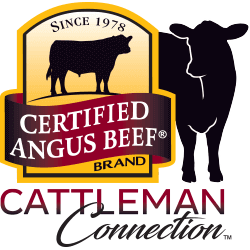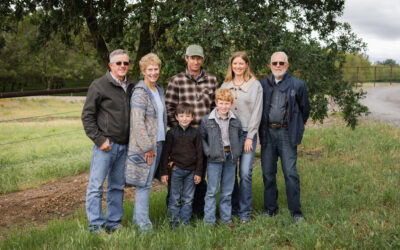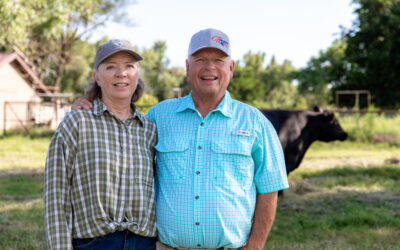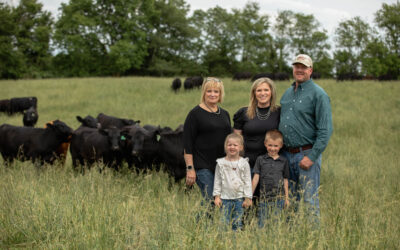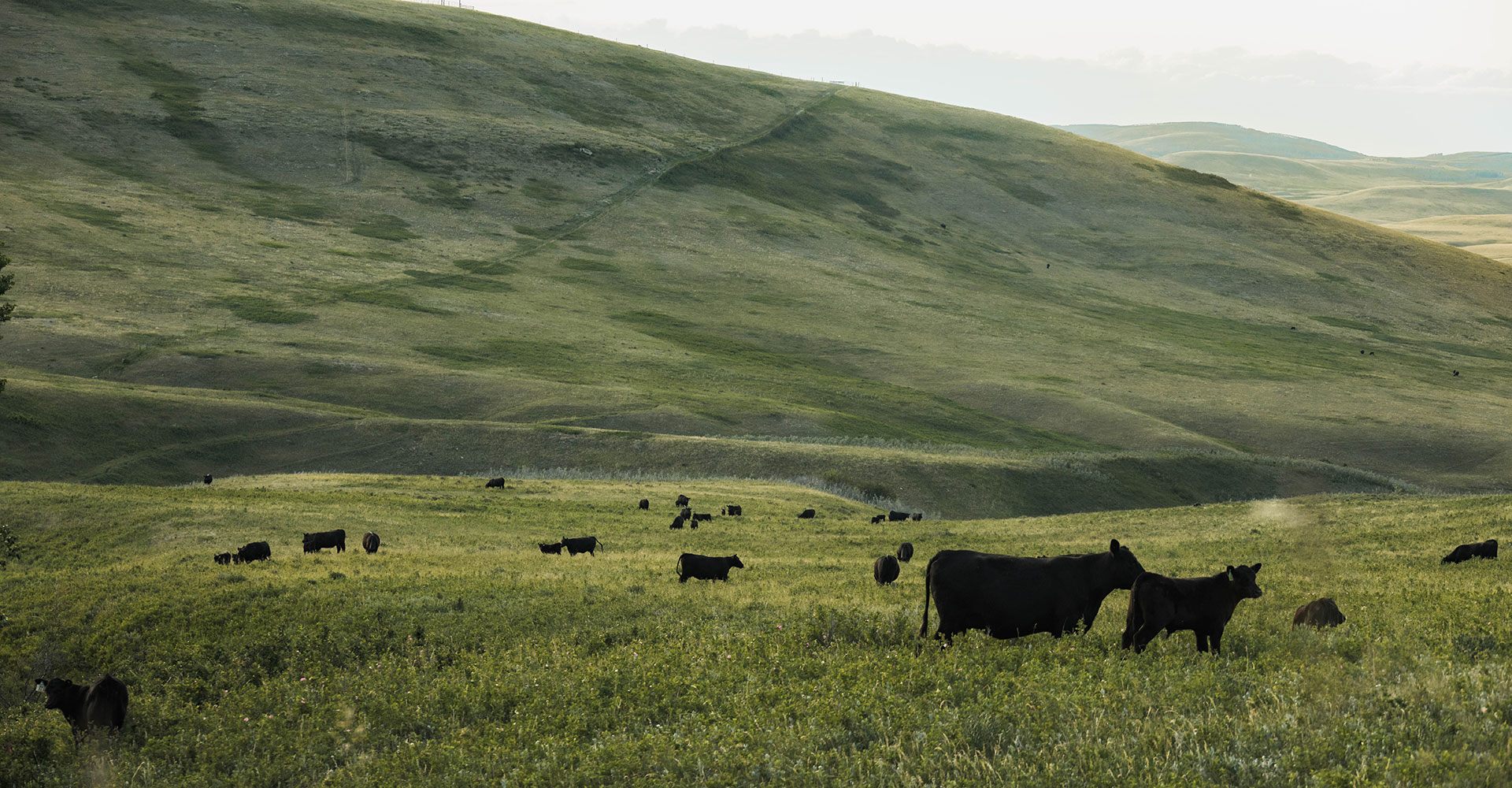
Double Down On Angus
The Cross family earns Certified Angus Beef’s 2025 Canadian Commitment to Excellence award.
By Courtney Weekley
In the Eastern slopes of the Canadian Rockies, the land stretches in steep, sweeping curves. Bold and untamed. Native grasses blanket the ridgelines. Spring-fed creeks cut through valleys, feeding rivers that have shaped the foothills for centuries. It’s a beautiful place, yet brutal for ranchers.
To raise cattle here, you need more than determination. You need vision and a commitment to double down on what works best.
That’s what defines Cross Cattle Company.
South of Calgary, Alberta, brothers Austin and Malcolm Cross carry on a century-old family history. Their great-great-grandfather staked his future on this land. Today, the Cross brothers are building one of their own—with Angus cattle that not only perform in the harsh environment but consistently meet the highest standards for beef quality.
Success with this combined mission earned them the 2025 Certified Angus Beef Canadian Commitment to Excellence award.
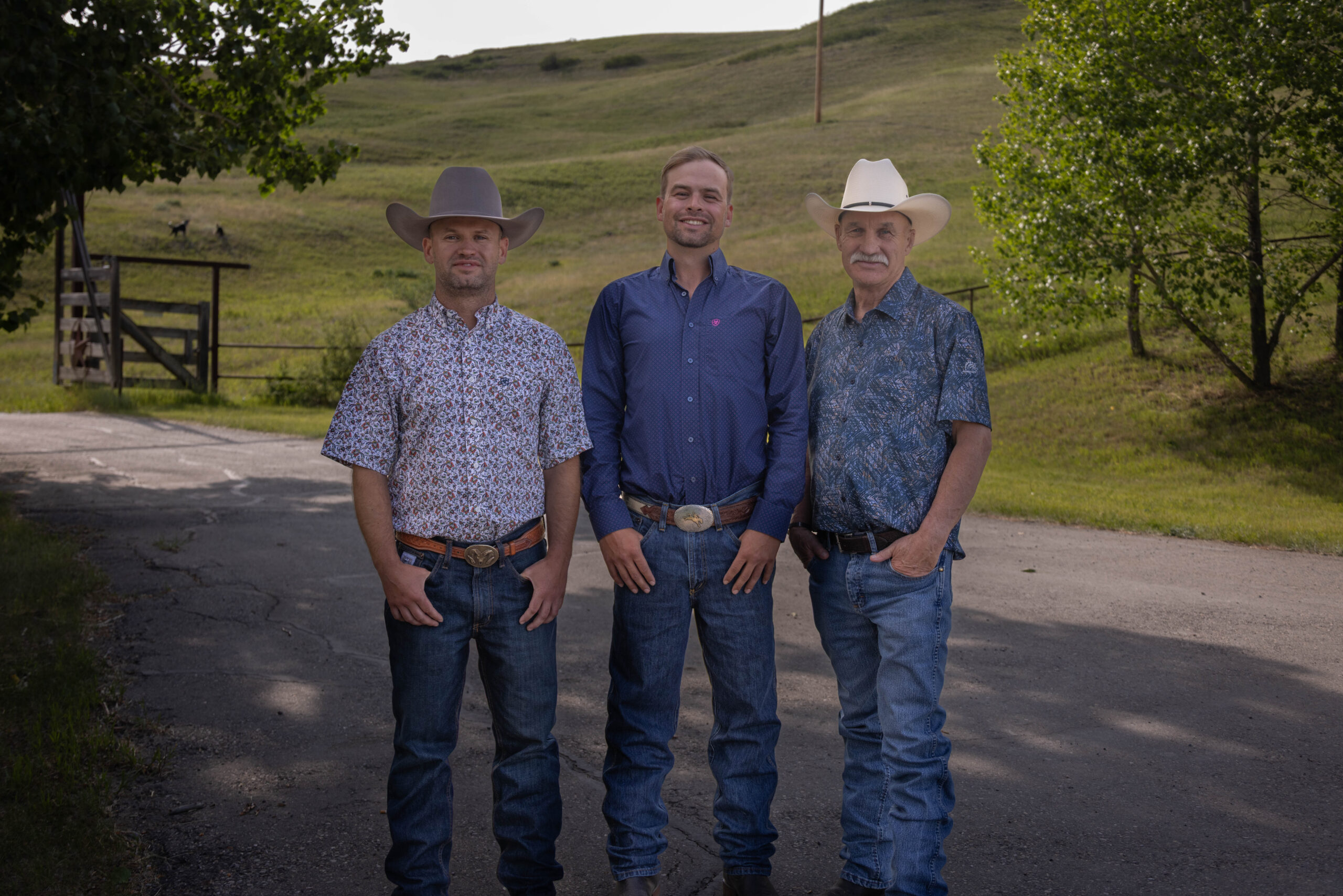
Caption: (Left to right) Brothers Malcolm and Austin with their father, Bill.
Double Down on Quality
In much of Canada’s cattle industry, the focus often lands on pounds and size rather than premium beef. The Cross family leads with a focus on quality from the start, with clear intentions to raise cattle that perform well in the pasture and consistently meet high standards for carcass merit.
“We raise our cattle with the best intentions,” Austin says. “If they’re not gaining, we’re not doing our job.”
They select genetics to improve and complement their maternal strength and terminal performance, aiming to produce calves that hit the Certified Angus Beef ® brand and Prime targets. That’s a rare feat here, where regular carcass data is scarce and quality grades can be an afterthought.
Without frequent feedback from packers, the Crosses rely on historic results, visual appraisal and a disciplined bull selection strategy with seedstock programs aligned to their quality goals.
“Our main selector for bulls is EPDs. Appearance matters, but not as much as producing better calves,” Austin says. “Good data helps us weed out weaker bulls and steadily improve the herd.”
Just down the road, the Crosses work closely with their trusted local seedstock provider, Cudlobe Angus. The brothers’ father, Bill, has sourced bulls from them since 1986, building a partnership that feels like family.
This combination of phenotype and performance drives their breeding decisions, helping them raise calves that consistently meet high-quality standards.
While their ancestors raised Herefords, Shorthorns and Galloways, the Cross family made a clear choice to focus on Angus for its proven efficiency, adaptability and consistent carcass quality.
“This is the perfect place for a cow to live,” Austin says. “The land isn’t meant for crops. It’s meant for cattle. And Angus work here.”
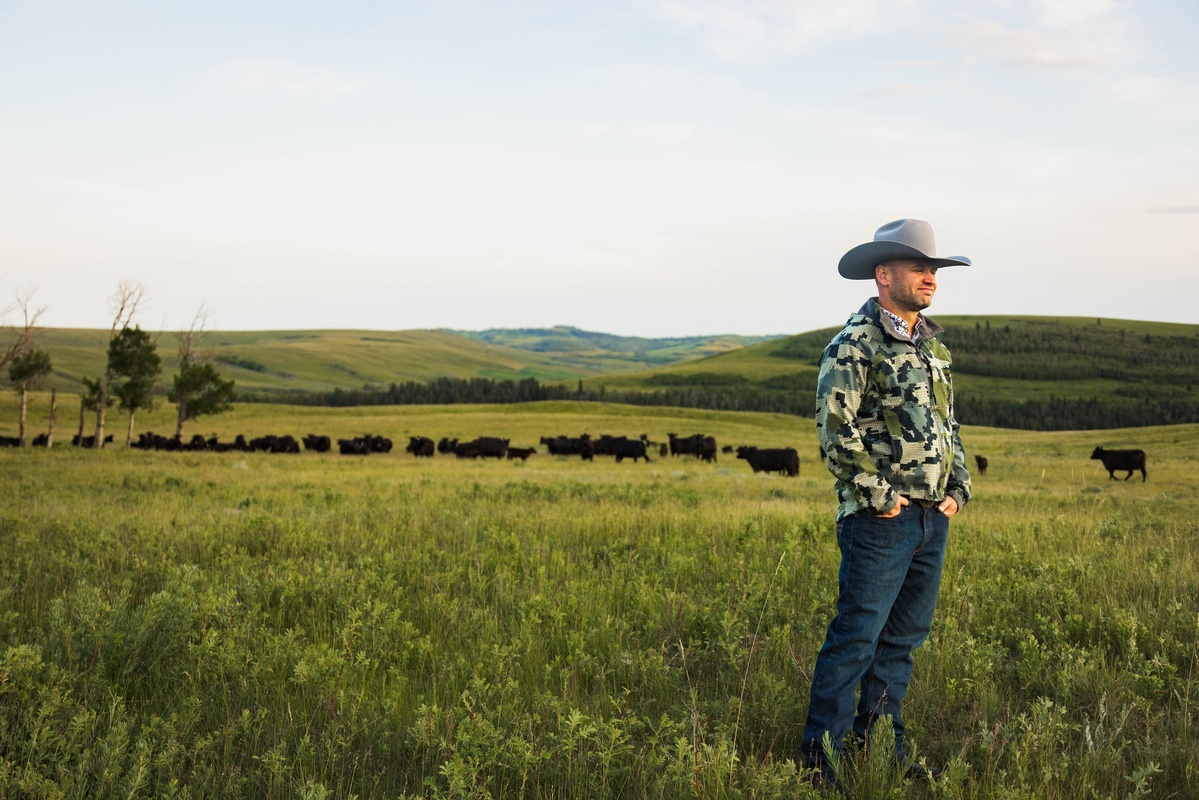
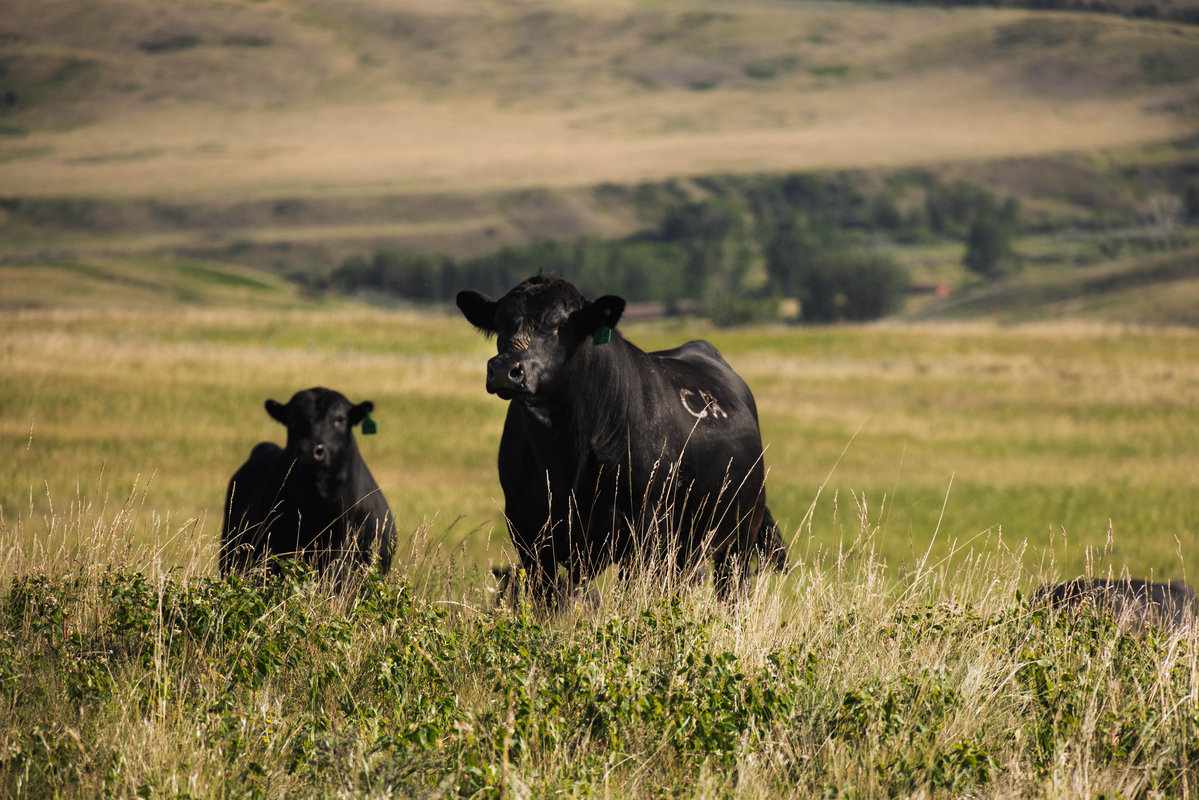
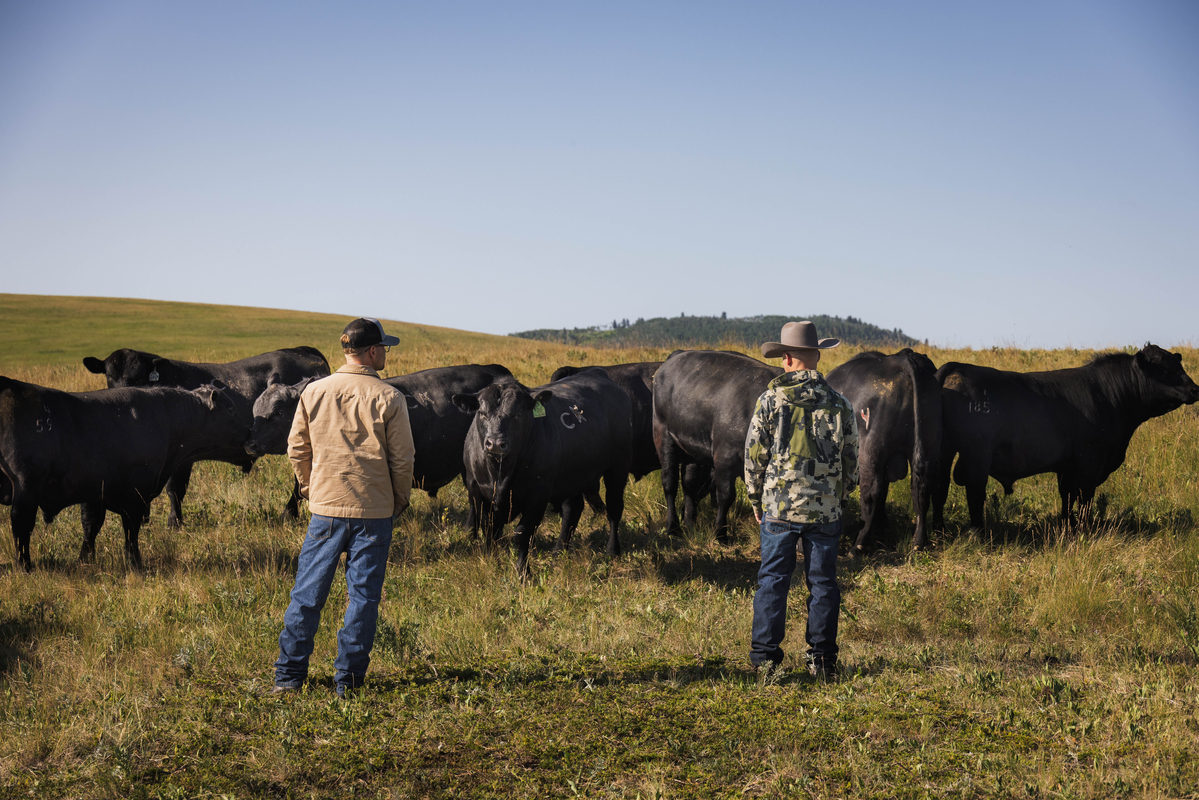
Of Grass and Water
The Crosses know cattle need resilient land. Native prairie grasses with roots reaching 10 to 15 feet deep give the land a natural advantage during drought by accessing moisture far below the surface.
“Native grass does better than invasive species, especially when drought hits,” Malcolm says. “Once it’s gone, it’s gone. You can’t just buy seed from somewhere else and expect it to thrive here.”
Still, drought remains a challenge. To adapt, the Crosses have shifted management, grazing their grass reserves for a while before feeding their cattle more heavily through winter to keep them in optimal condition.
Rotational grazing and long rest periods let the land recover while cattle return vital nutrients to the soil. Chinook winds, warm dry air descending from the Rockies, melt snow quickly and make winter grazing possible even in the coldest months.
Equally essential are the spring-fed water systems. In a region where dugouts freeze solid and ice chipping isn’t sustainable, gravity-fed springs funnel water into tire troughs. The setup is simple and effective, even at -40°C.
“The springs are the bread and butter of the place,” Austin says. “You can go without grass for a while, but you need water. That’s the difference between making it and not.”
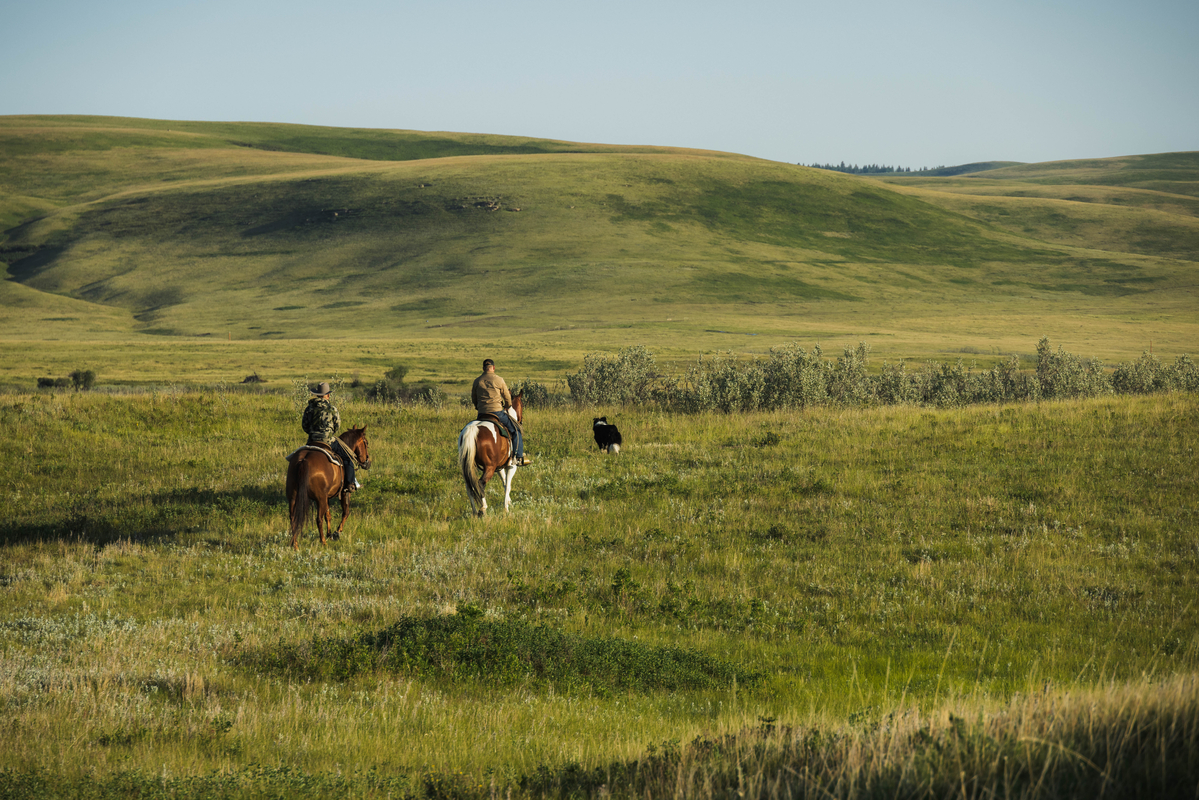
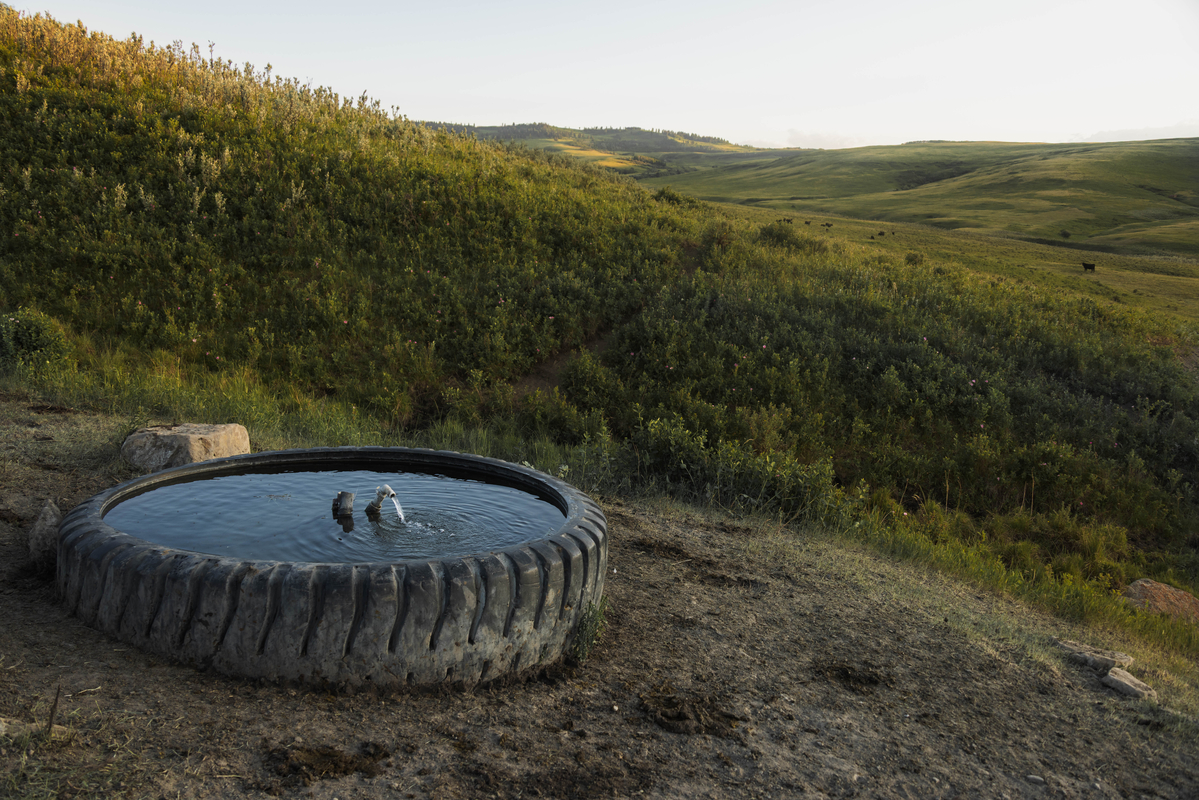
Family First
The grit behind Cross Cattle Company comes from its family roots. Austin and Malcolm grew up with the harsh realities of ranch life: droughts, tough seasons and the discipline to prepare for the unknown.
While the brothers lead the operation, their parents have stepped back to give them space to lead. Malcolm’s wife, Sam, also supports the operation and raises their young sons Talon and Steel, already dreaming of the day they might carry on the family legacy.
“Family is everything,” Malcolm says. “And with her support, I’m able to do this. She’s right there, every step.”
The Cross family knows their hard work honors the past and builds a future for generations to come.
“We want to build it bigger and better,” Austin says. “It’s a lot of sacrifice, working extra hours, missing out on things. But at the end of the day, it’s not just for us. It’s for the generations that come after.”
The Crosses doubled down on Angus because they know quality starts with care. Every decision reflects their commitment to the land, the cattle and the future they’re building for the next generation.
This story was originally published in the October 2025 Angus Journal.
You May Also Like…
Legacy in the Golden Land
On a quiet stretch of Northern California rangeland, a different story unfolds. The Borror family’s legacy modestly speaks through the cattle they raise, the ground they steward. The generations who’ve made a life here demonstrate commitment to doing things right, even when no one is watching.
Helping Hands, Helping Herds
“When I die, I want to come back as one of your cows,” murmurs a friend to Steve Zybach. Full to the brim from an alfalfa ration every day, bountiful fields of lovegrass stretched out across the Texas Panhandle—and owners who leave no ounce of cattle care up for question. The Zybachs’ motivation for this level of dedication to their Angus cattle is simply love.
An Ambassador for All
Joanie, with daughter Lindsey and her husband, Adam Hall, raise registered Angus cattle with two primary goals: producing high-quality seedstock that perform well in a wide variety of environments and ensuring end-user satisfaction. Those goals tie everything together, from promoting Angus to other producers to sharing their story with CAB partners and beef consumers.
